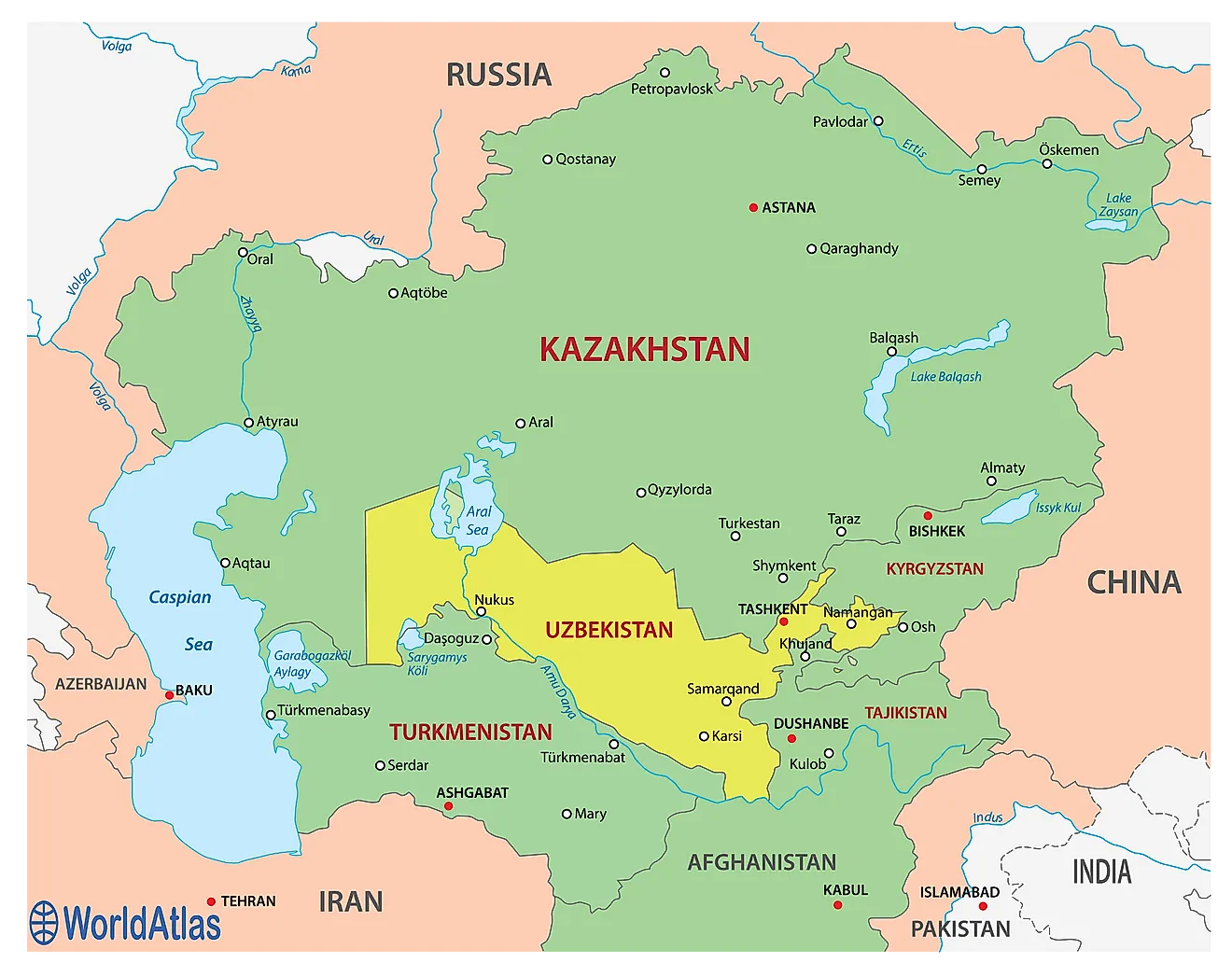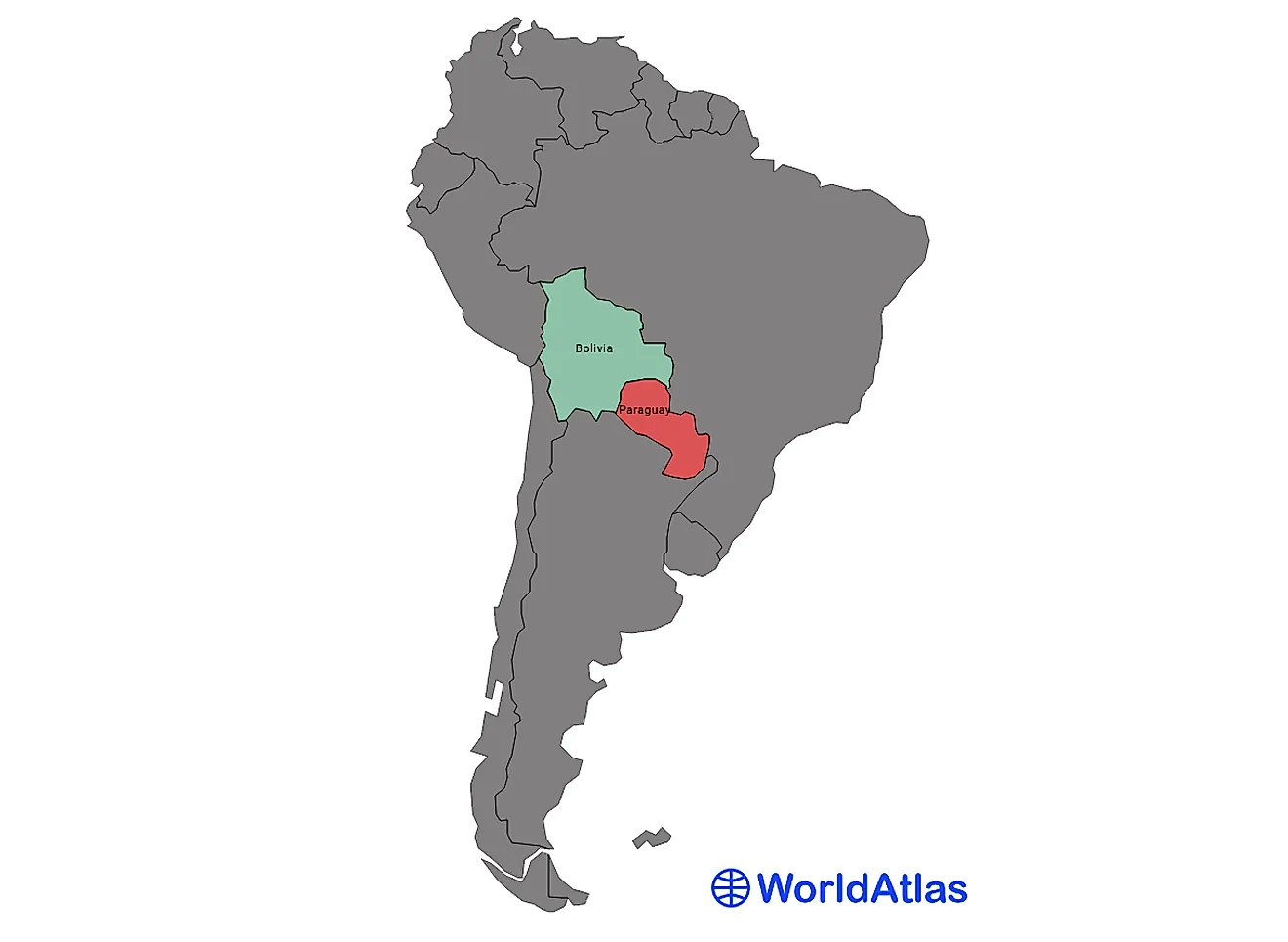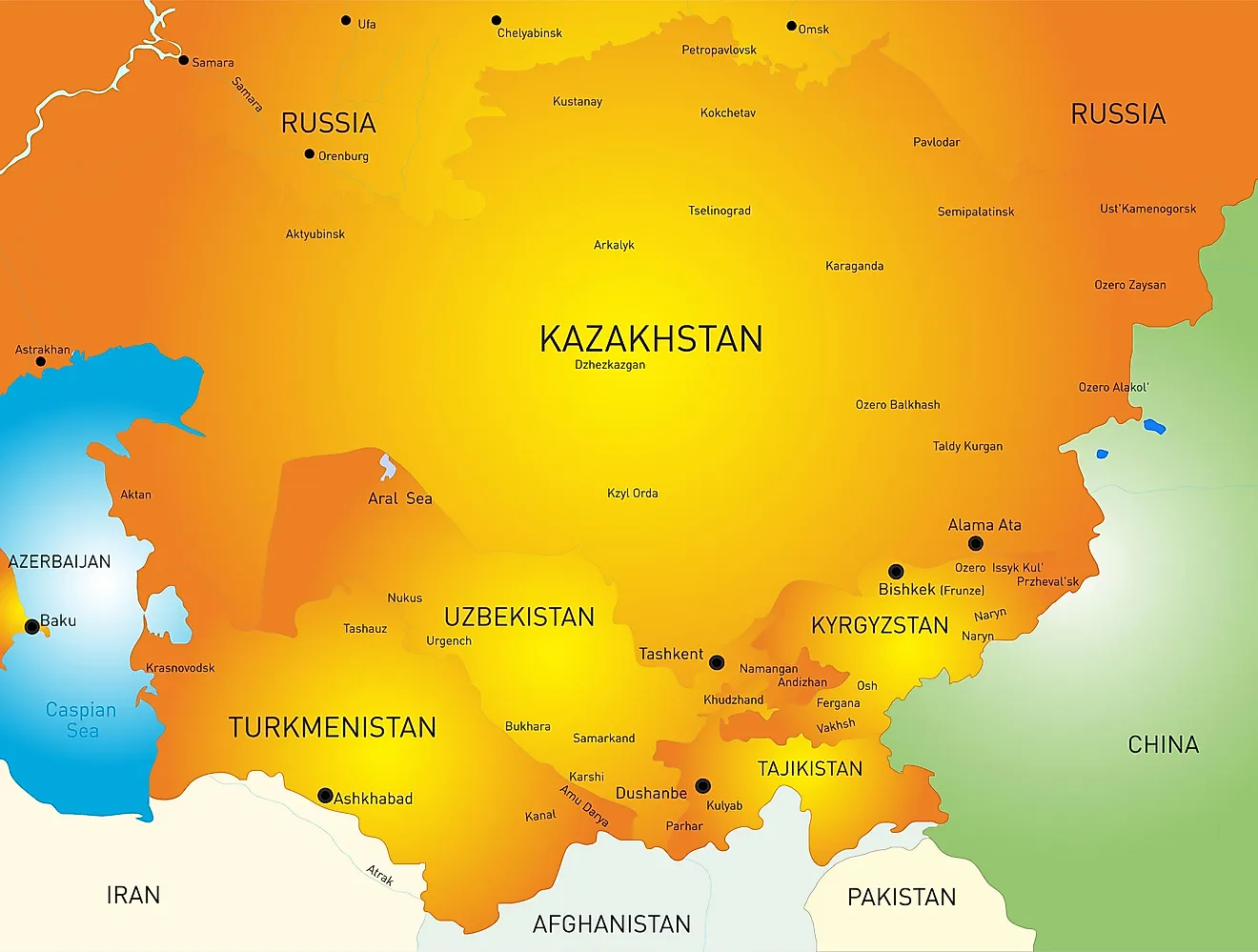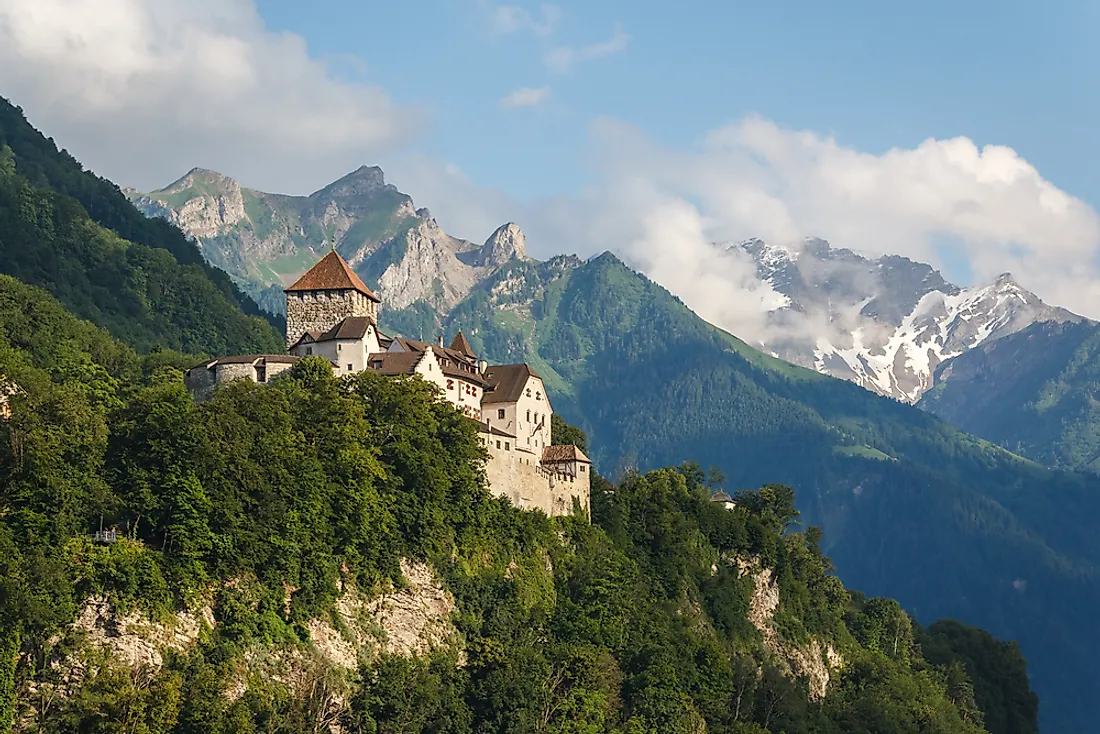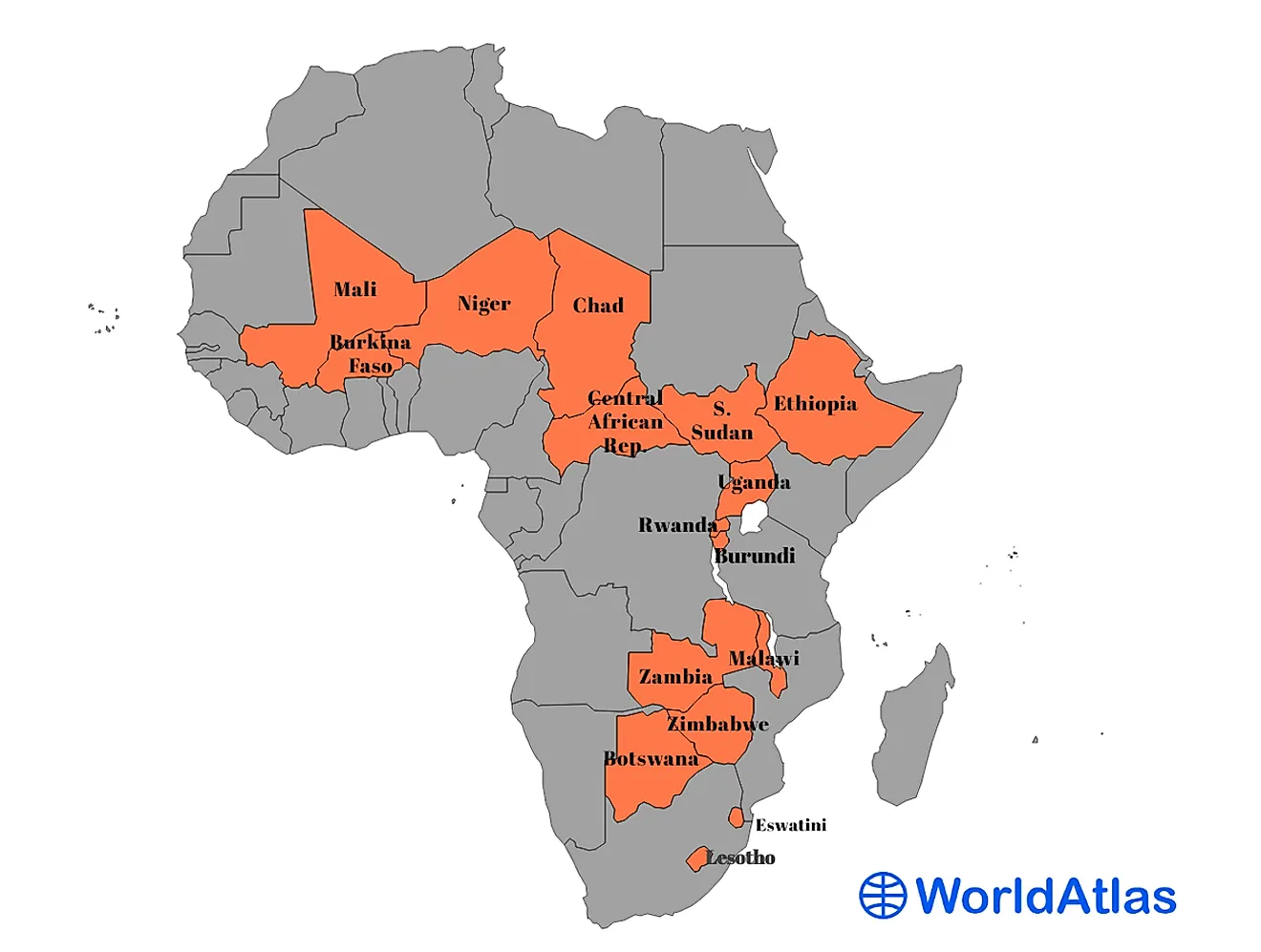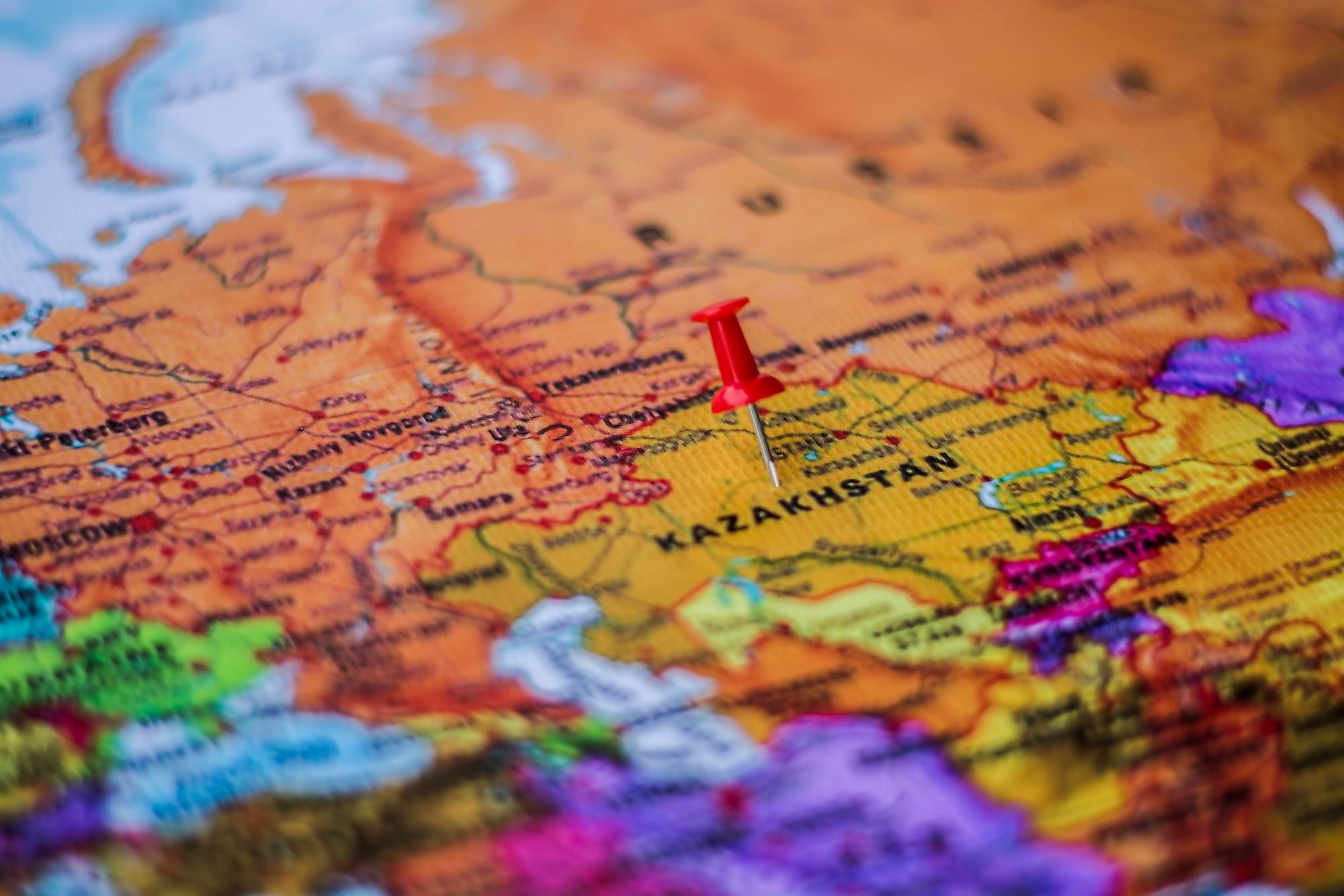
Landlocked Countries Of The World
A landlocked country is a country that does not border any of the World Oceans or whose nearest coastline lies in another country. However, a landlocked country may have a coastline on an endorheic basin or borders a large water body such as a lake or swamp. Thus, a country is considered landlocked if one or more countries surround it and has no immediate access to open water. Currently, there are 44 landlocked countries in the world.
Some of these countries are singly landlocked, while others are double landlocked. A singly landlocked country is a country surrounded by just one country. Only three countries are singly landlocked; San Marino and Vatican City (surrounded by Italy) and Lesotho (surrounded by South Africa). Singly landlocked countries are often referred to as enclaves. In a double landlocked country, the residents have to cross at least two international borders before they can access a coastline. The world’s two doubly-landlocked countries are Uzbekistan and Liechtenstein.
Contents:
Location
As observed in the world map below, landlocked countries are found in Asia, Africa, Europe, and South America. North America and Oceania do not have any landlocked countries while Antarctica has no countries. Africa has 16 landlocked countries, the highest among the continents of the world. Asia and Europe have 12 and 14 landlocked countries respectively. South America has only two landlocked countries.
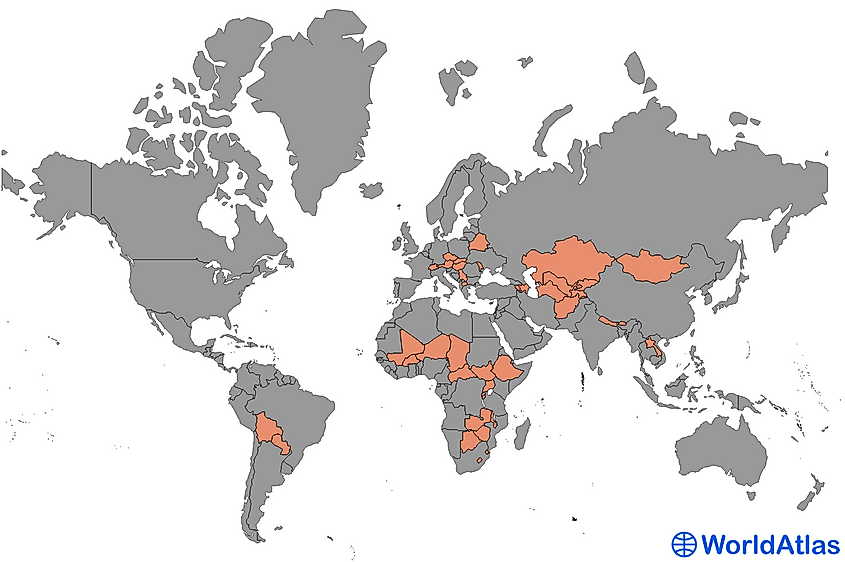
Area
The size of the landlocked countries vary widely from 2,724,900 km2 for Kazakhstan (the largest) to 0.44 km2 for the Vatican City (the smallest). Both Vatican City and San Marino are enclaves of Italy. The table below lists the landlocked countries by total area (land and water) in km2.
|
Rank |
Country |
Area (km2) |
|---|---|---|
|
1 |
Kazakhstan |
2,724,900 |
|
2 |
Mongolia |
1,564,116 |
|
3 |
Chad |
1,284,000 |
|
4 |
Niger |
1,267,000 |
|
5 |
Mali |
1,240,192 |
|
6 |
Ethiopia |
1,104,300 |
|
7 |
Bolivia |
1,098,581 |
|
8 |
Zambia |
752,618 |
|
9 |
Afghanistan |
652,230 |
|
10 |
South Sudan |
644,329 |
|
11 |
Central African Republic |
622,984 |
|
12 |
Botswana |
581,730 |
|
13 |
Turkmenistan |
488,100 |
|
14 |
Uzbekistan |
447,400 |
|
15 |
Paraguay |
406,752 |
|
16 |
Zimbabwe |
390,757 |
|
17 |
Burkina Faso |
274,200 |
|
18 |
Uganda |
241,038 |
|
19 |
Laos |
236,800 |
|
20 |
Belarus |
207,600 |
|
21 |
Kyrgyzstan |
191,951 |
|
22 |
Nepal |
147,181 |
|
23 |
Tajikistan |
144,100 |
|
24 |
Malawi |
118,484 |
|
25 |
Hungary |
93,028 |
|
26 |
Azerbaijan |
86,600 |
|
27 |
Austria |
83,871 |
|
28 |
Czech Republic |
78,867 |
|
29 |
Serbia |
77,474 |
|
30 |
Slovakia |
49,035 |
|
31 |
Switzerland |
41,277 |
|
32 |
Bhutan |
38,394 |
|
33 |
Moldova |
33,851 |
|
34 |
Lesotho |
30,355 |
|
35 |
Armenia |
29,743 |
|
36 |
Burundi |
27,830 |
|
37 |
Rwanda |
26,338 |
|
38 |
North Macedonia |
25,713 |
|
39 |
Eswatini |
17,364 |
|
40 |
Luxembourg |
2,586 |
|
41 |
Andorra |
468 |
|
42 |
Liechtenstein |
160 |
|
43 |
San Marino |
61 |
|
44 |
Vatican City |
0.44 |
Source: United Nations Statistics
Largest Landlocked Country By Area - Kazakhstan
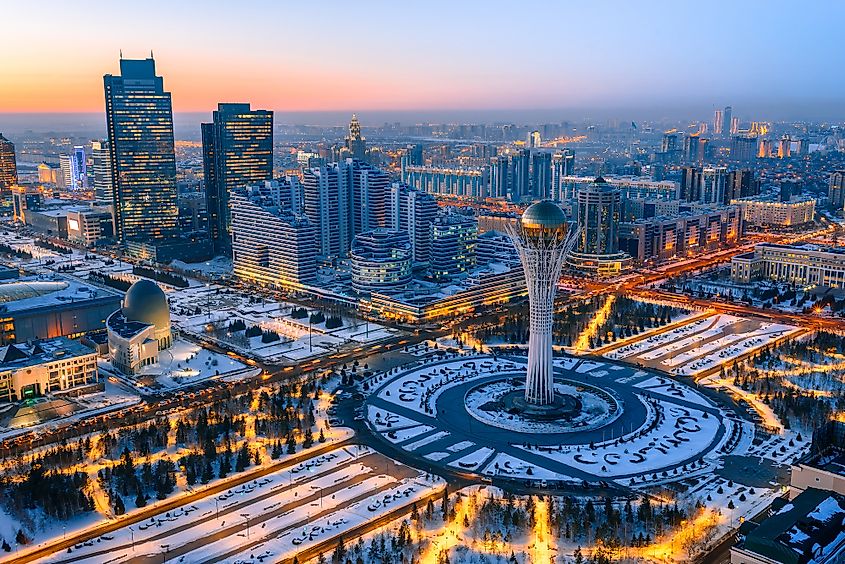
Kazakhstan, one of the 12 landlocked countries of Asia, is the largest landlocked country in the world by area. It covers an estimated land area of 2.7 million km2, making it the world’s 9th largest country by size. Kazakhstan is a transcontinental country, meaning that it stretches over more than one continent. Although it is located in Central Asia, a smaller portion extends into Europe. The Asian country is surrounded by five countries, including Turkmenistan, Uzbekistan, and Kyrgyzstan to the south, China to the east, and Russia to the north. It has a coastline on the Caspian Sea, extending from the sea’s mid-east to mid-north.
Although Kazakhstan is a landlocked country, it is Central Asia’s most economically dominant country, accounting for about 60% of the region's GDP. It has thriving oil and gas industries, and vast mineral resources. Kazakhstan is home to 18.7 million people, making it the 6th largest landlocked country by population.
Smallest Landlocked Country By Area - Vatican City
Vatican City is the smallest landlocked country by area. The city-state is an enclave within Rome. It is one of the three singly landlocked countries (others are Lesotho and San Marino), surrounded by Italy. The Vatican City is located within the Vatican Hill territory and covers approximately 0.44 km2.
Population
The population of landlocked countries also vary widely. Asia and Africa hosts most of the highly populated landlocked countries while Europe is home to the least populated ones including the Vatican City, the world's least populous nation. The table below lists the 44 landlocked nations by population.
|
Rank |
Country |
Population |
|---|---|---|
|
1 |
Ethiopia |
112,078,730 |
|
2 |
Uganda |
44,269,590 |
|
3 |
Afghanistan |
38,041,750 |
|
4 |
Uzbekistan |
33,580,650 |
|
5 |
Nepal |
28,608,710 |
|
6 |
Niger |
23,310,720 |
|
7 |
Burkina Faso |
20,321,380 |
|
8 |
Mali |
19,658,030 |
|
9 |
Malawi |
18,628,750 |
|
10 |
Kazakhstan |
18,513,930 |
|
11 |
Zambia |
17,861,030 |
|
12 |
Chad |
15,946,880 |
|
13 |
Zimbabwe |
14,645,470 |
|
14 |
Rwanda |
12,626,950 |
|
15 |
Burundi |
11,530,580 |
|
16 |
Bolivia |
11,513,100 |
|
17 |
South Sudan |
11,062,110 |
|
18 |
Czech Republic |
10,669,710 |
|
19 |
Azerbaijan |
10,023,320 |
|
20 |
Hungary |
9,769,950 |
|
21 |
Belarus |
9,466,860 |
|
22 |
Tajikistan |
9,321,020 |
|
23 |
Austria |
8,877,070 |
|
24 |
Switzerland |
8,574,830 |
|
25 |
Laos |
7,169,450 |
|
26 |
Paraguay |
7,044,640 |
|
27 |
Serbia |
6,944,980 |
|
28 |
Kyrgyzstan |
6,456,900 |
|
29 |
Turkmenistan |
5,942,090 |
|
30 |
Slovakia |
5,454,070 |
|
31 |
Central African Republic |
4,745,190 |
|
32 |
Mongolia |
3,225,170 |
|
33 |
Armenia |
2,957,730 |
|
34 |
Moldova |
2,657,640 |
|
35 |
Botswana |
2,303,700 |
|
36 |
Lesotho |
2,125,270 |
|
37 |
North Macedonia |
2,083,460 |
|
38 |
Eswatini |
1,148,130 |
|
39 |
Bhutan |
763,090 |
|
40 |
Luxembourg |
619,900 |
|
41 |
Andorra |
77,140 |
|
42 |
Liechtenstein |
38,020 |
|
43 |
San Marino |
33,860 |
|
44 |
Vatican City |
825 |
Largest Landlocked Country By Population - Ethiopia
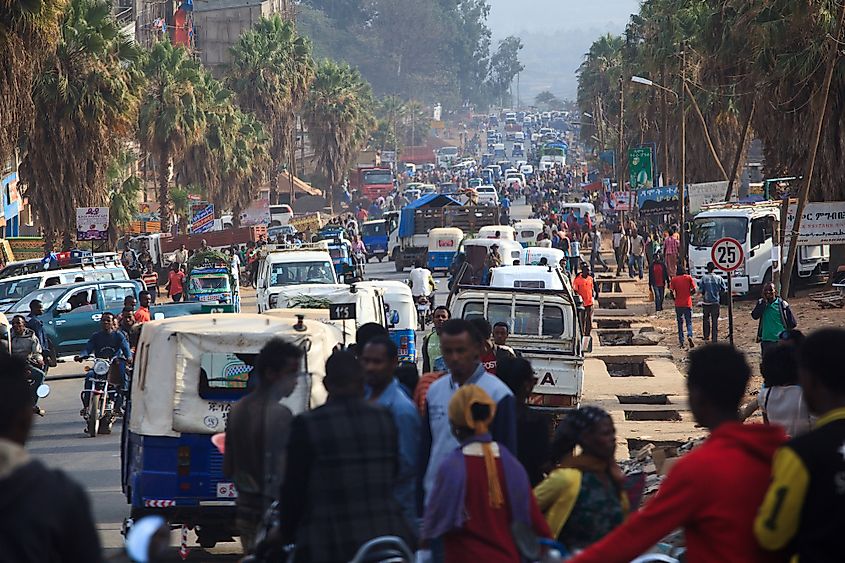
Ethiopia, one of the 16 landlocked countries of Africa, is the world’s largest landlocked country by population. It is home to about 112 million people, making it Africa’s second-most populous country and the world’s 13th largest by population. Ethiopia is the world’s 28th largest country and the 6th largest landlocked country by area, covering approximately 1.1 million km2. It has a population density of 92.7 people per km2, making it the world’s 123rd most densely populated country.
Ethiopia is located mainly in the Horn of Africa and shares a land border with several other Eastern Africa countries. It is bordered to the north by Eritrea, northeast by Somaliland and Djibouti, east by Somali, south by Kenya, west by South Sudan, and northwest by Sudan.
Smallest Landlocked Country By Population - Vatican City
Vatican City is not only the smallest landlocked country by size but also by population. The Vatican has a population of about 800 people, including Vatican citizens and residents. The citizens are approximately 370 and reside within the country and elsewhere, including diplomats to other countries. The population comprises mainly the clergy, religious members, and laypeople, including Swiss Guards. All residents and people working at the Vatican are Catholics. It is also one of the most densely populated countries in Europe and the World.
Economy
The landlocked status of a country is believed to be an impediment to the prosperity of the country due to lack of direct and independent access to the sea and hence, trade via the sea route. Having territories in coastal areas is also advantageous in several other ways. It provides numerous income opportunities in the form of fishing, tourism, etc. However, lacking direct access to the coast does not always mean being economically weak. In fact, some of the landlocked countries like Liechtenstein, Luxembourg, Switzerland, and others, are some of the world's richest nations. It is good diplomatic relations with neighboring countries and good governance that helps these countries remain prosperous. Most of these wealthy landlocked countries are part of Europe while those with the lowest per capita GDP are from Africa. The table below lists the 44 landlocked nations by GDP per capita.
|
Rank |
Country |
GDP per capita (USD) |
|---|---|---|
|
1 |
Liechtenstein |
181,402.8 |
|
2 |
Luxembourg |
114,704.6 |
|
3 |
Switzerland |
81,993.7 |
|
4 |
Austria |
50,137.7 |
|
5 |
San Marino |
48,995.1 |
|
6 |
Andorra |
40,886.4 |
|
7 |
Czech Republic |
23,494.6 |
|
8 |
Slovakia |
19,266.3 |
|
9 |
Hungary |
16,731.8 |
|
10 |
Kazakhstan |
9,812.4 |
|
11 |
Botswana |
7,961.3 |
|
12 |
Serbia |
7,411.8 |
|
13 |
Turkmenistan |
6,966.6 |
|
14 |
Belarus |
6,663.3 |
|
15 |
North Macedonia |
6,022.2 |
|
16 |
Paraguay |
5,414.8 |
|
17 |
Azerbaijan |
4,793.6 |
|
18 |
Armenia |
4,622.7 |
|
19 |
Moldova |
4,503.5 |
|
20 |
Mongolia |
4,339.8 |
|
21 |
Eswatini |
3,894.7 |
|
22 |
Bolivia |
3,552.1 |
|
23 |
Bhutan |
3,316.2 |
|
24 |
Laos |
2,534.9 |
|
25 |
Uzbekistan |
1,724.8 |
|
26 |
Zimbabwe |
1,464 |
|
27 |
Kyrgyzstan |
1,309.4 |
|
28 |
Zambia |
1,305.1 |
|
29 |
South Sudan |
1,119.7 |
|
30 |
Lesotho |
1,118.1 |
|
31 |
Nepal |
1,071.1 |
|
32 |
Mali |
879 |
|
33 |
Tajikistan |
870.8 |
|
34 |
Ethiopia |
855.8 |
|
35 |
Rwanda |
820 |
|
36 |
Uganda |
794.3 |
|
37 |
Burkina Faso |
786.9 |
|
38 |
Chad |
709.5 |
|
39 |
Niger |
553.9 |
|
40 |
Afghanistan |
507.1 |
|
41 |
Central African Republic |
467.9 |
|
42 |
Malawi |
411.6 |
|
43 |
Burundi |
261.2 |
|
44 |
Vatican City |
Not Available |
Country With The Highest GDP Per Capita - Liechtenstein
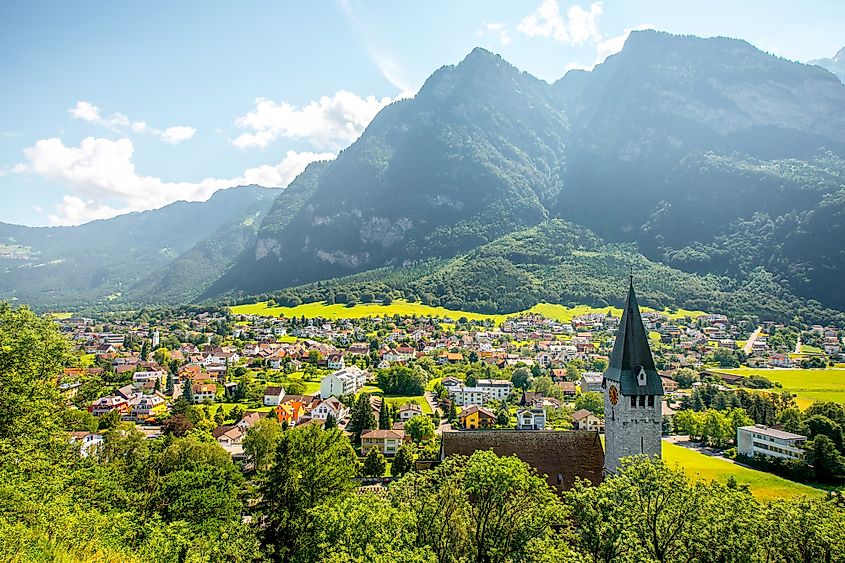
Although Liechtenstein is the third smallest landlocked country by size (after Vatican City and San Marino), it is the world’s largest landlocked country by GDP per capita. With a per capita GDP of $181,402.8, the double-landlocked Central European state is one of the world’s wealthiest nations. Liechtenstein has an area of about 160 km2 and an estimated population of 36,000. It is bordered to the north and east by Austria and to the south and west by Switzerland. Switzerland and Austria are the second and third largest landlocked countries by GDP per capita.
Liechtenstein is one of the countries with the fewest natural resources. However, it has more registered companies than its population. It is a highly industrialized economy, supported by a thriving financial sector. Major industries include metal manufacturing, textile, food processing, pharmaceuticals, and power tools. Besides the financial sector, tourism also contributes significantly to the country’s GDP.
Country With The Lowest GDP Per Capita - Burundi
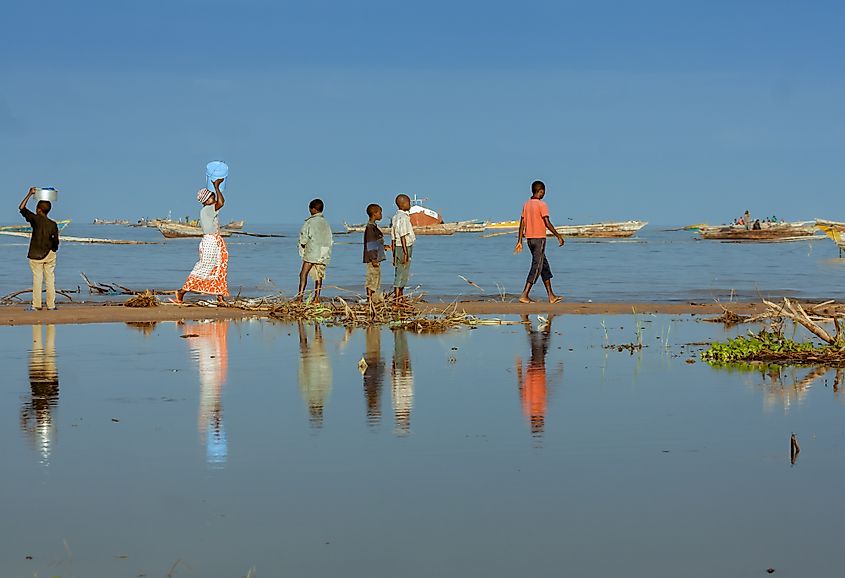
Burundi is the world’s poorest landlocked country, with a GDP per capita of $261.2. The landlocked country is located in the Great Rift Valley where East Africa meets the African Great Lake Region. Burundi is bound by three countries, one of which is also a landlocked country. Its direct access to the South Atlantic Ocean is blocked by the Democratic Republic of the Congo, while Tanzania blocks its direct access to the Indian Ocean. Rwanda, a landlocked country, borders Burundi to the north. Lake Tanganyika, on the southwestern border, is the main water body that Burundi has access to. The landlocked country covers about 27,834 km2 and has an estimated population of 10.6 million people.
Burundi has few natural resources and underdeveloped industries. Agriculture is the chief income source, accounting for about 50% of the GDP and over 90% of the total workforce. It is mainly subsistence, with main imports including tea and coffee. Burundi is dependent on foreign aid, which accounts for about 42% of its national income. Corruption and civil unrest are also hindering economic development.
General Issues
General issues and challenges faced by landlocked countries are mainly economic and political. An ocean or sea is an important economic driver for any country because it supports several industries, including fishing, tourism, and transportation. Historically, nations have sought to have access to oceans or seas at all expense, including bloodshed.
Landlocked countries do not have direct access to trade routes, hindering their freedom of trade. These landlocked countries depend on other countries to access and use the maritime ports. Therefore, they incur a higher cost to ship cargo as compared to countries with access to open water bodies. The ripple effect is that consumers ultimately bear the burden by paying more for the shipped goods. For instance, food items in landlocked countries cost three times as much as in coastal countries.
Politically, a landlocked country must be in good relations with coastal countries at all times. Any form of diplomatic row or poor relations can have a significant impact on the landlocked country. A coastal country can block a landlocked country from accessing the maritime port, frustrating its import and export activities.
Political stability or otherwise in coastal countries also has a direct impact on landlocked countries. If a coastal country is experiencing any political instability, the landlocked country will also feel the effect of the instability. Any armed conflict may lead to the destruction of goods on transit and transportation network. For example, the 2007/2008 post-election violence in Kenya affected the delivery of goods to Uganda, resulting in a partial food shortage in the country.
Bordering Countries
|
Country |
Continent |
Bordering countries |
|---|---|---|
| Afghanistan | Asia | 6 - China, Iran, Pakistan, Tajikistan, Turkmenistan, Uzbekistan |
| Andorra | Europe | 2 - France, Spain |
| Armenia | Asia | 4 - Azerbaijan, Georgia, Iran, Turkey |
| Austria | Europe | 8 - Czech Republic, Germany, Hungary, Italy, Liechtenstein, Slovakia, Slovenia, Switzerland |
| Azerbaijan | Asia | 5 - Armenia, Georgia, Iran, Russia, Turkey |
| Belarus | Europe | 5 - Latvia, Lithuania, Poland, Russia, Ukraine |
| Bhutan | Asia | 2 - China, India |
| Bolivia | Americas | 5 - Argentina, Brazil, Chile, Paraguay, Peru |
| Botswana | Africa | 4 - Namibia, South Africa, Zambia, Zimbabwe |
| Burkina Faso | Africa | 6 - Benin, Côte d'Ivoire, Ghana, Mali, Niger, Togo |
| Burundi | Africa | 3 - Democratic Republic of the Congo, Rwanda, Tanzania |
| Central African Republic | Africa | 6 - Cameroon, Chad, Congo, Democratic Republic of the Congo, South Sudan, Sudan |
| Chad | Africa | 6 - Cameroon, Central African Republic, Libya, Niger, Nigeria, Sudan |
| Czech Republic | Europe | 4 - Austria, Germany, Poland, Slovakia |
| Eswatini | Africa | 2 - Mozambique, South Africa |
| Ethiopia | Africa | 6 - Djibouti, Eritrea, Kenya, Somalia, South Sudan, Sudan |
| Hungary | Europe | 7 - Austria, Croatia, Romania, Serbia, Slovakia, Slovenia, Ukraine |
| Kazakhstan | Asia | 5 - China, Kyrgyzstan, Russia, Turkmenistan, Uzbekistan |
| Kyrgyzstan | Asia | 4 - China, Kazakhstan, Tajikistan, Uzbekistan |
| Laos | Asia | 5 - Cambodia, China, Myanmar, Thailand, Vietnam |
| Lesotho | Africa | 1 - South Africa |
| Liechtenstein | Europe | 2 - Austria, Switzerland |
| Luxembourg | Europe | 3 - Belgium, France, Germany |
| Malawi | Africa | 3 - Mozambique, Tanzania, Zambia |
| Mali | Africa | 7 - Algeria, Burkina Faso, Côte d'Ivoire, Guinea, Mauritania, Niger, Senegal |
| Moldova | Europe | 2 - Romania, Ukraine |
| Mongolia | Asia | 2 - China, Russia |
| Nepal | Asia | 2 - China, India |
| Niger | Africa | 7 - Algeria, Benin, Burkina Faso, Chad, Libya, Mali, Nigeria |
| North Macedonia | Europe | 5 - Albania, Bulgaria, Greece, Kosovo, Serbia |
| Paraguay | Americas | 3 - Argentina, Bolivia, Brazil |
| Rwanda | Africa | 4 - Burundi, Democratic Republic of the Congo, Tanzania, Uganda |
| San Marino | Europe | 1 - Italy |
| Serbia | Europe | 8 - Albania, Bosnia and Herzegovina, Bulgaria,Croatia, Hungary, Montenegro, North Macedonia, Romania |
| Slovakia | Europe | 5 - Austria, the Czech Republic, Hungary, Poland, Ukraine |
| South Sudan | Africa | 6 - Central African Republic, Democratic Republic of the Congo, Ethiopia, Kenya, Sudan, Uganda |
| Switzerland | Europe | 5 - Austria, France, Germany, Italy, Liechtenstein |
| Tajikistan | Asia | 4 - Afghanistan, China, Kyrgyzstan, Uzbekistan |
| Turkmenistan | Asia | 4 - Afghanistan, Iran, Kazakhstan, Uzbekistan |
| Uganda | Africa | 5 - Democratic Republic of the Congo, Kenya, Rwanda, South Sudan, Tanzania |
| Uzbekistan | Asia | 5 - Afghanistan, Kazakhstan, Kyrgyzstan, Tajikistan, Turkmenistan |
| Vatican City | Europe | 1 - Italy |
| Zambia | Africa | 8 - Angola, Botswana, Democratic Republic of the Congo, Malawi, Mozambique, Namibia, Tanzania, Zimbabwe |
| Zimbabwe | Africa | 4 - Botswana, Mozambique, South Africa, Zambia |
